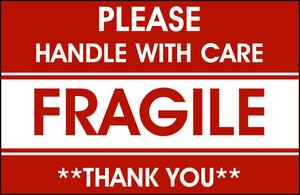You may think you need to invest in a ton of packing materials. However, you probably own plenty of things you can use for packing without buying cardboard boxes, bubble wrap, and other supplies.
Before we get into the many common packing materials you already own and can use during your move, it's important to consider how these materials will be used. It's best to use these materials with the green boxes for added eco-friendliness and protection of your things. Renting green boxes will provide a better solution compared to purchasing cardboard boxes.
Here are some of the packing materials you can use that you already own.
Suitcases
You probably already know this, but you can pack up your suitcases for your move. However, don't waste your time using these for just clothing items. Instead, pack heavy electronics, DVDs, books, and games into the suitcases.
The wheels make these easier to move with heavier items. If you have suitcases without wheels, they work great for shoes, boots, and clothing items. You can also pack fragile items between the clothing for added protection.
Plastic Bags
If you're like many people, you have a ton of those plastic bags you get from grocery stores and other stores. These are great for packing up your belongings. They can work to fill in space in boxes or to wrap items up.
In addition, you can use plastic sandwich bags for small items or hardware when taking items apart.
Magazines, Junk Mail, Newspaper, Wrapping Paper
Instead of spending money on bubble wrap or packing paper, use the old magazines, junk mail, newspapers, and gift wrapping paper you already have. All of these items are great for packing and will save you from spending money or creating more waste.
Hampers
You should never pack an empty hamper as it's simply a waste of space. Your hamper can be filled with toys, shoes, boots and other items. You can secure the top by putting a pillowcase over it or with a plastic sheet.
Towels, Linens, Blankets, and Clothing
When you have fragile items needing to be properly packed and protected, consider the soft items you also need to pack. Blankets, towels, linens, and clothing can all be used as packing materials.
Instead of wasting money on cardboard boxes and bubble wrap, you can rent Green Boxes and use your soft items as the packing materials. Not only will this protect your items well, but it will also give you a sturdier box to pack compared to cardboard.
A few other common packing materials you already own and can reuse include:
Twist ties for cords
Trash pails
Beer/Liquor boxes
Tupperware container
Baskets
Duffle bags, trash bags, backpacks, gift bags, and other bags
Drawers
Yarn
Anything soft can be used to help protect items, while many of the things you will be packing offer unused space you can use as a "box", such as a hamper or drawers.
These creative solutions, paired with the right Green Boxes will go a long way to making your move more eco-friendly. Make sure you consider what you already own and how you can use it for packing.








